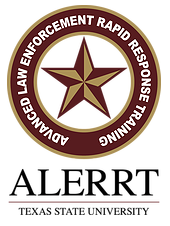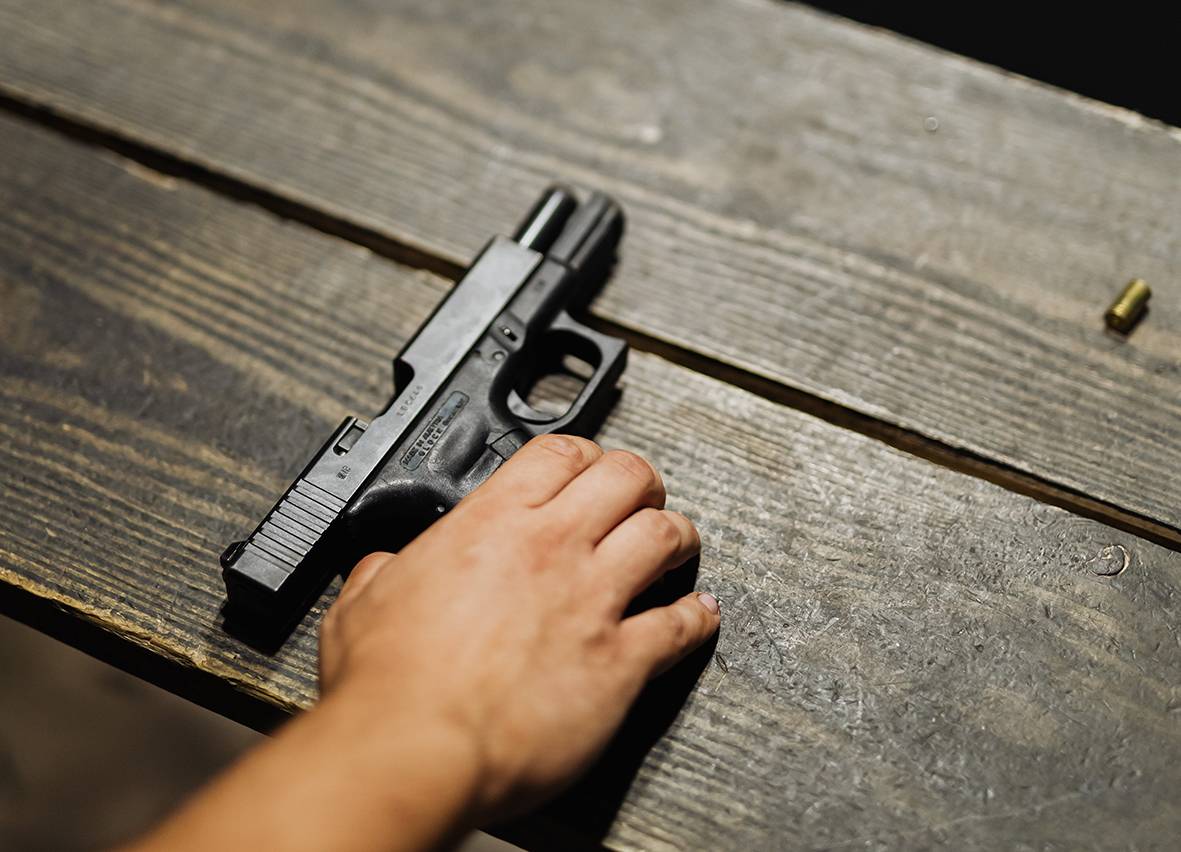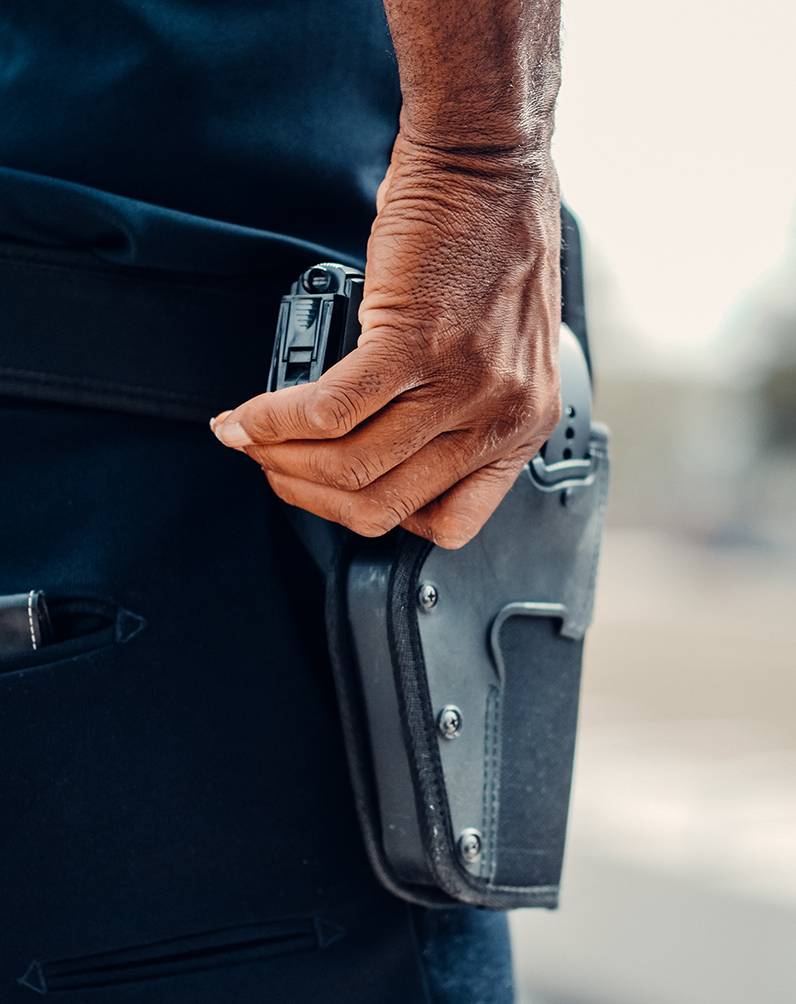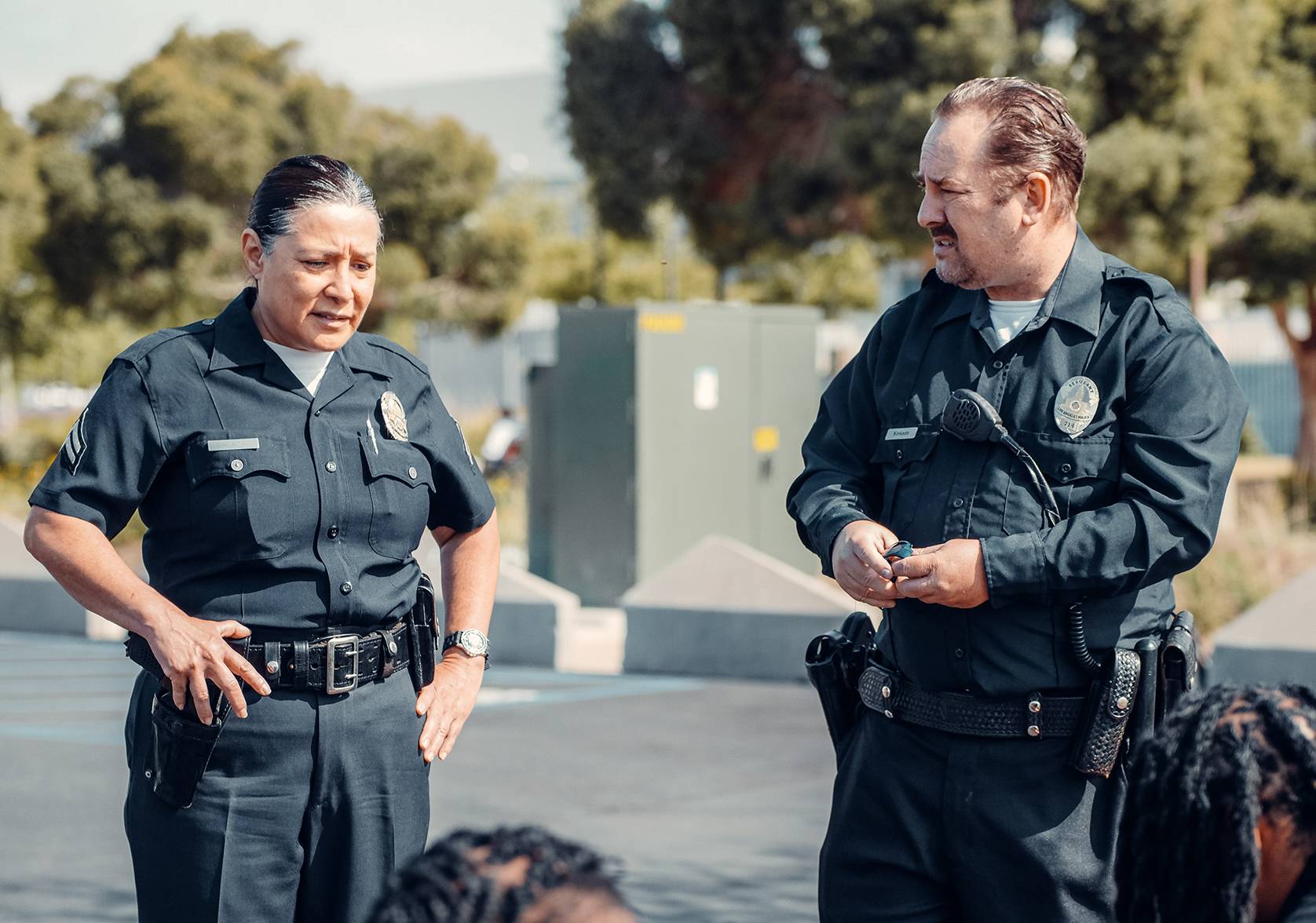M. Hunter Martaindale, ALERRT Center Director of Research; William L. Sandel, Missouri State University; Matthew J. McAllister, TXST Department of HHP – Director of the MAP Lab | April 25, 2022


An interdisciplinary partnership between Texas State University’s ALERRT Center and the Department of Health and Human Performance’s Metabolic and Applied Physiology laboratory (MAP Lab) recently produced new research findings aimed at enhancing the safety and effectiveness of law enforcement and first responder protocols.
ALERRT’s research department is tasked with evaluating and enhancing the understanding of active shooter events as well as assist in improving law enforcement best practices. The MAP lab is fully equipped with state-of-the-art equipment that allows for the execution of physical performance, metabolic, and biochemical tests. Numerous research findings from the partnership were recently published:
Helping officers identify a firearm faster in life-threatening scenarios

Law enforcement officers are sometimes required to make split-second use of force decisions. One factor that can impact their decision-making process is the presence of a firearm. When officers incorrectly identify an object as a firearm, they may mistakenly apply force that is not proportional to the threat.
ALERRT designed a training program based on the concept of deliberate practice to examine if a short burst of training could improve the speed and accuracy of weapon identification in a dynamic use of force scenario. The experiment randomly assigned participants to either a control or test condition. Both groups received similar vision-based training; however, the test group’s training was geared toward correctly identifying objects as either a firearm or not. Both groups completed a pre-test, training intervention, and post-test. Both groups performed identically during the pre-test.
Interestingly, with only 20 minutes of training, the test group incorrectly identified firearms 2/3 less often than the control group, and the test group was 16% faster at visually locating the object in the subject’s hand. It is worth noting that neither the test nor control group were told specifically where to look or how to improve performance. Instead, participants organically learned where to focus their vision to locate items during the short training program.
This pilot study showed that short bursts of training based on the concept of deliberate practice may be a useful part of a larger use of force training program. The ALERRT Center is seeking funding to expand the training and collect data over a longer period of time to examine efficacy.
Read the research article published in Police Quarterly: https://journals.sagepub.com/doi/full/10.1177/1098611120944387
Investigating how much time and space an officer needs to react

In policing, the “21-foot rule” states that an officer should be able to safely draw and fire their weapon at a charging suspect with an edged weapon with at least 21 feet of space. While this rule has been anecdotally debunked, there have not been any real scientific studies addressing its validity. This study sought to examine the 21-foot using a multiphasic scientific approach.
The study was broken into three primary phases and an additional solutions phase. Phase one examined the time it takes someone to cover 21 feet. This was done using custom built laser gates that would start a time as the subject began to run and stop it when the subject crossed the 21-foot mark. It was determined that the average individual could run 21 feet in 1.5 seconds.
Phase two looked at how quickly an officer could draw and fire their weapon under non-stressful conditions. The officer stood 21 feet from a silhouette target and was instructed to draw and fire a single shot when a light was turned on. It took the officers an average of 1.8 seconds to draw and fire with this simple stimulus.
Phase three combined phases one and two by placing a suspect 21 feet from an officer who was instructed to draw and fire when the suspect charged them. This phase added the element of stress using a taser device called a shock knife. This was done to better simulate a real-world encounter. After interviewing the suspect (played by the same actor in every run) for some time, the actor would draw the shock knife while charging the officer.
On average, officers were able to draw and fire their weapons in 1.43 seconds. Comparing the phase one and three times against each other we find that there is an average distance of just over a foot between the suspect and officer when a shot if fired. A suspect would have to be 32 feet from an officer for 95% of officers to be able to safely draw and fire their weapons.
Read the research article published in Police Practice & Research: https://www.tandfonline.com/doi/full/10.1080/15614263.2020.1772785
Stress impacts male and female first responders differently during active shooter incidents

Law enforcement officers are often exposed to a variety of high stress scenarios such as civilian encounters which may induce a significant amount of physiological or psychological stress. Exposure to these scenarios causes significant increases in a variety of stress markers such as blood concentrations of cortisol, adrenaline (i.e., epinephrine/norepinephrine) and salivary cortisol (CORT), a-amylase (AA), and secretory immunoglobulin-A (SIgA). In addition, some studies have shown that the way stress impacts men and women may differ significantly.
Recent work has shown that men demonstrate greater stress hormone (CORT) responses to acute stress exposure when compared to women. Thus, a recent study from the MAP Lab and the ALERRT Center aimed to further investigate these differences by exposing men and women to acute stress in the form of an active shooter scenario.
Fifteen males and 16 females participated in a brief (~50 sec) active shooter scenario involving professional actors which included an active gunman as well as four victims. Participants were equipped with a Glock 17T pistol which fired blanks (i.e., no projectiles) and were asked to shoot the attacker if he or she was currently identified as a threat. Blood samples were collected 15 min pre and 15 min post active shooter scenario, and saliva samples were collected four times: 30 min and 5 min before, as well as 5 min and 30 min after the active shooter scenario. Samples were analyzed for markers of stress and oxidative stress: blood- epinephrine, norepinephrine, hydrogen peroxide; saliva-AA, SIgA, CORT and uric acid.
Statistical analysis found that both men and women experienced significant increases in markers of stress in response to the shooter drill: epinephrine, AA, and uric acid. Further, women demonstrated lower concentrations of CORT, uric acid, hydrogen peroxide, and AA.
These results demonstrate that both men and women are similarly affected by acute stress exposure; however, women tend to demonstrate lower overall markers of stress and oxidative stress.
It should be noted that these findings can be impacted by a number of factors such as age, and menstrual cycle. Current ongoing work in the MAP lab/ALERRT center aims to further investigate the effect of gender and menstrual cycle in relation to biological markers of stress. these findings have potentially major implications for individuals working in high stress occupations such as law enforcement and military personnel.
Read the research article published in Comprehensive Psychoneuroendocrinology: https://www.sciencedirect.com/science/article/pii/S2666497621000205
Future collaborative work with ALERRT and the MAP Lab will be aimed at studying interventions that can: 1) mitigate the adverse impact of occupational stressors in high stress occupations, 2) improve aspects of occupational and physical performance, such as decision-making and reaction time, and 3) improve aspects of cardiometabolic health.
About The ALERRT Center at Texas State:
The ALERRT Center at Texas State University was founded in 2002 as a partnership between Texas State University, San Marcos Police Department, and Hays County Sheriff’s Office to address the need for active shooter response training for first responders. ALERRT has been awarded more than $100 million in state and federal grant funding that allows law enforcement, fire, EMS, and dispatch personnel to be trained free of charge across the nation. While much of the training is delivered on-site to agencies across the country, ALERRT also maintains a multi-million-dollar training facility in San Marcos, TX for training purposes. Additionally, ALERRT has recently developed an eLearning department to create and deliver eLearning course materials for first responders and the communities in which they serve. ALERRT employs both Ph.D. and master’s students from Texas State University’s School of Criminal
Share this article
For more information, contact University Communications:Jayme Blaschke, 512-245-2555 Sandy Pantlik, 512-245-2922 |
